"If I Don't Make it Back..."
A closer look at the armed man (disguised as a U.S. Marshal) who demanded a meeting with RFK, Jr.
PREFACE: The following is a work of investigative journalism that is entirely sourced from official Los Angeles police and court documents, and from a video recorded and posted by the subject of this report. The editor of the Kennedy Beacon Substack proposed to me that I investigate the story because I am a true crime author and because I have long been interested in assassinations. It was only after the editor made this proposal that I realized, to my astonishment, that not a single legacy news outlet has examined this story. Those who would like to learn more about independent presidential candidate, Robert F. Kennedy, Jr. are encouraged to become free subscribers to the Kennedy Beacon. Its team of reporters are doing great work in covering many issues that are neglected by our legacy media.
I am a Dallas native, and since I was a boy I have read the literature on the assassination of President John F. Kennedy. My father was on the grand jury that indicted Jack Ruby for murdering Lee Harvey Oswald, and my old friend and fellow author, Hugh Aynesworth, was, for many years, a leading authority on the assassination.
The longstanding practice of providing Secret Service protection for ALL presidential candidates—inaugurated on the day Senator Robert Kennedy was shot in 1968—was President Lyndon Johnson’s most perfectly non-partisan action. It is in this spirit that I have investigated this story, which I believe to be of vital significance to our Constitutional Republic.
On September 15, 2023, Robert F. Kennedy Jr., attended a presidential campaign event at the Wilshire Ebell Theatre to celebrate Hispanic Heritage Month. Shortly before the event began, a 44-year-old man posing as a U.S. Marshal (with a U.S. Marshal badge on a lanyard and belt-clip federal ID) and carrying a pistol in a shoulder holster tried to enter the theater through its non-public entrance.
The man claimed he was at the event (in the guise of a federal law officer) to meet Kennedy, and vehemently ordered members of the security detail, “Take me to Kennedy immediately. I have to see him right now.”
Kennedy’s security detail suspected the man wasn’t a U.S. Marshal, so they isolated and detained him until LAPD officers arrived and arrested him. As the incident was reported to the court by an LAPD detective:
Respondent was wearing a black long-sleeve EMS shirt, green tactical trousers, brown boots and a shoulder holster containing two magazines and a handgun, all of which were in plain view. Respondent had what appeared to be a U.S. Marshals badge hanging around his neck, a separate exposed badge on the right side of his belt (later identified as a New York Department of Health Paramedic Badge) and a work name tag with his photo clipped to the left side of his belt (later identified as a Kaiser Permanente Woodland Hills Technician Emergency Services tag).
The responding officers approached respondent who spontaneously removed two wallets and handed them to one of the officers. The thinner bifold wallet contained respondent's California Drivers' License inside the card section, and the other section of the wallet was embossed with "United States Marshal Service Family Member" with a small U.S. Marshals pin under" it. The officers asked respondent if he was employed with the U.S. Marshals and he responded "I'm actually with . . . well I'm actually with the Marshals."
The officers asked respondent why he had a U.S. Marshals badge around his neck and also a New York Department of Health badge on his person. Respondent acknowledged these badges and responded “I was told to come here.” Officers asked him who told him to come and respondent responded “By the Q Operation, homie. The Q Operation.” When the officers inquired about this, respondent stated “If I'm wasting my time then I'll just leave.” Officer’s told respondent he was not free to leave to which he responded, “I’m not employed by the Marshals, I'm working with the Marshals.”
Officers asked respondent if he had any kind of law enforcement credentials, to which he responded, “I’m Secret Space Program, OK? Medical Science Officer, I guess you can call it the ICC, lnterplanetary Corporate Conglomerate, the Military Industrial Complex.” Officers also asked respondent if he had CCW (carrying a concealed weapon permit), respondent said he did not. Officers asked respondent if he had a Bureau of Security and Investigative Services card, which would permit him to work security, or a security guard open carry permit, which would allow him to work security in an armed capacity. Respondent said that he did not. At this time, officers placed respondent in the back of a police vehicle with the digital-in-car video activated.
Due to the inconsistencies in his statements, the suspicious law enforcement credentials, his attire, and his visible firearm, officers detained respondent pending an investigation. Officers handcuffed respondent and removed the handgun (Springfield XD9 9mm pistol) from his holster.
At this time respondent motioned towards another male (later identified as Raymond Aispuro) standing in close proximity and asked “can my brother grab my bag?” indicating the backpack on the ground. Officers asked if there was anything in the backpack that they should be aware of and respondent replied “Yeah, actually there is a gun in there, too . . There’s a gun at the top.” Additional officers arrived at scene to assist the primary unit with their investigation. They took respondent's brother Raymond Aispuro into custody pending the firearms investigation.
Officers asked respondent if he knew what event was being held at the location to which he responded, “Robert F. Kennedy is here. I was told to come down here. Listen, I work undercover.” Officers inquired whether he had any documentation indicating that he was hired for the event. Respondent stated “I wasn't hired for anything. I was told to come here.”
Private security [Kennedy’s protection team] on scene offered the services of a bomb sniffing dog to check the backpack. Once the backpack was cleared of explosive devices, officers opened it and recovered the contents, including another handgun (Rock Island Armory M1911 .45 caliber) inside'a holster, which also contained another loaded magazine. The handgun itself was loaded with ten (10) rounds in the seated magazine. There were an additional four (4) loaded magazines in the backpack.
Using department resources, the responding officers confirmed both respondent and his brother Raymond’s identities and criminal histories. They both returned with no wants or warrants or California criminal histories. Both the handguns returned as registered to respondent.
The most salient elements of the incident are as follows:
1). A heavily armed man, disguised as a U.S. Marshal, demanded (with the authority conveyed by his disguise) to be taken to presidential candidate Kennedy. When the LAPD officers asked him why he’d brought two loaded weapons to his intended meeting with the presidential candidate, he replied that it was to protect himself.
2). The man (44-year-old Adrian Paul Aispuro) had no record of criminal offenses or diagnosed mental health problems. After 44 years of leading an inconspicuous, law-abiding life, he committed three unlawful acts on the same day as part of his attempt to have a personal encounter with RFK Jr.
Impersonating a federal agent.
Openly carrying a handgun in a public place without a license.
Carrying a concealed handgun without a license.
3). The man’s actions were planned, organized, and deliberate. Throughout his encounter with the security detail and the police, he remained calm and composed. His conduct with his backpack was especially noteworthy. “Can my brother grab my bag?” he asked the officers. They asked if there was anything in it they should be aware of, to which he replied, “Yeah, actually there is a gun in there, too . . . .” He then specified, “There's a gun at the top.” This indicates he made a quick calculation the police were likely going to search the bag, so that it was best not to lie about the loaded pistol inside of it. Specifying, that it was “at the top” indicates that its location in the pack was at the forefront of his mind. In other words, he wouldn’t have to rummage around in the bag to grab the loaded pistol.
It’s notable that what Aispuro told the police is not what he told the Kennedy campaign about why he wanted to attend the event. When police examined his cell phone, they observed the following text exchange with the Kennedy Campaign’s automated event invitation texting program:
In fact, Aisporo had worked as an EMT for Kaiser Permanente for many years, though he was unemployed at the time of the incident. Claiming to have insider information about healthcare fraud and malfeasance—an issue known to be of great interest to RFK Jr.—was further evidence of planning and organization. This suggests a possible plan of pretending to carry information in his backpack, perhaps on a laptop, external hard drive or in printed documents.
Historical Context
The Wilshire Ebell Theater in Los Angeles is located less than two miles from the site of the now demolished Ambassador Hotel, where Robert F. Kennedy was fatally shot at a presidential campaign event on June 5, 1968, four-and-a-half years after his brother, President John Kennedy, was assassinated. Most Americans at the time found it unfathomably strange that yet another Kennedy died from an assassin’s bullets. How could this have happened?
On the very day of the shooting, President Johnson directed a U.S. Secret Service protection detail be placed with each presidential candidate and family. This practice was applied in every campaign season until Robert F. Kennedy Jr. announced his candidacy. To this day, the Biden administration refuses to grant Kennedy’s request for Secret Service protection, thereby flouting the time-honored practice that was inaugurated by the death of his father.
Hundreds of books and documentaries have been produced about the Kennedy assassinations in 1963 and 1968. The insatiable curiosity about these crimes starkly contrasts with the conspicuous lack of media inquisitiveness about the heavily armed man who tried to slip through a side door of the Wilshire Ebell Theater (not equipped with metal detectors) to meet RFK Jr.
Assassinations of major political candidates are profoundly destabilizing. There is no way to maintain even the semblance of an electoral democracy unless candidates are rigorously protected from violence. Societies in which assassinations frequently occur are typically not run by lawful governments, but by mafia bosses. Decent family men with wives and children will not seek high office if they must contend with a risk of being killed, with no effort made to protect them.
The theater setting of the September 15 incident reminded me of the assassination of President Lincoln on April 15, 1865. Lincoln was watching the final act of Our American Cousin in the presidential box of Ford’s Theater when he was shot by the actor, John Wilkes Booth. Though many Americans don’t know it, Booth was part of a conspiracy to kill Lincoln; his Vice-President, Ulysses S Grant; and Secretary of State Seward. Eight conspirators were convicted and four were hanged.
Lincoln’s assassination happened right after he finished waging a terrible civil war for which he incurred the wrath of many Confederate sympathizers like Booth. Today, RFK Jr. is running for president with the objective of healing our nation’s rancorous divisions to prevent civil war.
Like his uncle and father before him, Kennedy is concerned about what President Eisenhower called the Military-industrial complex and is intensely curious to understand how it works so that he can oppose its “unwarranted influence.”
As author David Talbot reveals in his book Brothers: The Hidden History of the Kennedy Years, Robert Kennedy Sr. suspected that actors within this complex were behind the murder of his brother, and he was determined to discover exactly who they were.
The Los Angeles District Attorney’s Response to the Incident
Based on its actions so far, the LA District Attorney’s office does not seem interested in charging Aispuro with any crime. The following is what we know about the police investigation and legal proceedings to date:
Aispuro was initially arrested on one felony weapon’s charge and $35,000 bail was set.
LAPD reportedly worked with the LA District Attorney’s office to investigate and explore other charges, which included serving a search warrant of Aispuro’s home.
On September 19, Aispuro’s defense counsel declared a doubt as to the defendant’s mental competence pursuant to Penal Code section 1368, and the criminal proceedings were suspended.
On September 21, a decision was made to reduce the charge to a misdemeanor and the case was transferred to the LA City Attorney’s office. Aispuro’s bail was also reduced to $10,000.
On September 22, at 3:23am, Aispuro was reportedly released from custody.
On October 3, a mental competency hearing was held that decided nothing apart from the need for Aispuro to be evaluated by a court-certified psychiatrist. Per court order, such an evaluation will be performed in the coming weeks and Aispuro is ordered to appear in court on October 20.
While the LAPD seized Aispuro’s weapons and is keeping them in its custody pending the outcome of the proceedings, Aispuro is currently free, with no restrictions and no GPS monitoring of his person. He has no criminal or mental health history that would prevent him from obtaining other weapons. This suggests that the LA judiciary does not regard Aispuro as dangerous. If this is indeed the case, it’s not clear how the assessment was made, because he was released on bail before he was evaluated by a psychiatrist.
Who is Adrian Paul Aispuro?
At the time of the incident, Adrian Paul Aispuro was a single, 44-year-old man who lived with his parents in Northridge, a suburb of LA’s San Fernando Valley. His parents told the LAPD their son “was injured in 2018 and stopped working at Kaiser in 2019. Since then, he has been isolated and withdrawn and spends a lot of time on the computer researching QAnon.”
An extremely conspicuous element of Aispuro’s persona is that, apart from a single TikTok video he recently posted, there are no traces of him on the web. It beggars belief that the TikTok video was the first thing he ever published online. This suggest that his internet content was scrubbed (by a sophisticated actor) before Aispuro tried to approach Kennedy.
He posted the TikTok video on July 31, three days before Kennedy appeared at another event in Los Angeles—near Aispuro’s home—in which the candidate talked about the importance of border security for Los Angeles.
The video was recorded in a garage of an address associated with Aispuro in Northridge. The home featured in the video appears middle class. The cameraman (whose identity in not mentioned in an LAPD investigative report filed with the court) walks along the front of the house. He initially focuses on a black MIA/POW flag and a Betsy Ross American flag.
The camera then approaches the garage, where Aispuro is standing, clothed in approximately the same outfit he wore when he was arrested six weeks later. The male voice of the cameraman addresses him as “Big Homie Zorro.” Zorro is a widely known fictional character—a masked vigilante with a double identity who defends the commoners and indigenous peoples of California against corrupt and tyrannical officials and other villains. Aispuro’s physical appearance in the video does not resemble the Zorro character, which suggests the Zorro allusion was an expression of a grandiose self-image. “Big Homie Zorro” was preparing to undertake a great exploit.
He begins by instructing his viewers to go to Rumble to check out two different channels—one by a UFOlogist and another by a host who frequently discusses government corruption. He claims he will be talking with the hosts of both channels, though neither has any videos featuring him.
He then introduces himself as follows:
My name is Adrian Paul Aispuro. First name, A-D-R-I-A-N. Middle Name, P-A-U-L. Last name, A-I-S as in Sierra-P as in Paul-U-R-O. Calculate my full name in gematria and calculate my last name in gematria and do you’re fucking research on that last name and you’ll know who you’re fucking with. Alright.
Spelling out his name so meticulously appears to be an expression of his insistence that journalists get it right after the event he portends. Gematria, according to Encyclopedia Britannica, is:
the substitution of numbers for letters of the Hebrew alphabet, a favourite method of exegesis used by medieval Kabbalists to derive mystical insights into sacred writings or obtain new interpretations of the texts
I have been advised by a gematria analyst that using an alphanumerical cipher could have yielded different values which could be recombined to spell out four very ominous-sounding phrases.
As Aispuro later emphasized in his interview with an LAPD detective after his arrest, he claims to be the cousin of Emma Coronel Aispuro.
According to a CNN report, she is the wife of Mexican drug lord Joaquin “El Chapo” Guzman, and she was released from a U.S. federal prison on September 13, 2023, two days before the Kennedy event in Los Angeles. Aispuro is not a common surname in the United States, perhaps because it is apparently of Basque, and not Spanish origin. According Emma Aispuro’s Wikipedia entry, she was born in San Francisco in 1989 and grew up in the remote Durango village of La Angostura.
After Aispuro’s bold introduction, he states:
I need to speak to the Hells Angels. I need to speak to the Mongols. Contact me at StoicMedic717@gmail.com. Let’s fucking break some knee caps. Let’s go for a ride, dog. Let’s fuck it up, all right.
He gestures towards his chopper-style motorcycle. This strikes me as the most inauthentic part of the video. Anyone with even superficial knowledge of biker clubs knows that no one from the Hells Angels or from the Mongols would respond to a non-member in a suburban garage—pointing to a motorcycle that is neither a Harley nor an Indian—and demanding that someone in their organizations call him. Moreover, the Hells Angels and Mongols regard each other as mortal enemies and would never ride together or cooperate in any way.
After making this awkward statement and gesture, he then puts the world on notice that something big is about to happen.
I’m putting this planet on lockdown. DefCon 1, regulators mount up [a reference to the 1994 Warren G hit song “Regulate”]. Stay at home orders, effective now. That’s what’s happening. Take care of each other, protect the women and the children. If I don’t make it back, call the fucking President, your commander-in-chief, Donald J. Trump.
What struck me most about the video was the contrast between his blustery, tough-guy talk and his careful and crystal clear enunciation in perfect American English with no Latino accent. Though some of his phrases seem disjointed and are sprinkled with what sounds like gangsta rap expressions, he appears perfectly lucid and even calculating.
Many features of the video seem stagey, starting with the opening shot of the flags. Aispuro seems to go out of his way to give the impression he’s an aggressive, macho, gun-toting, anti-government conspiracy theorist and Trump supporter, whom he refers to as “the President, your commander-in-chief, Donald J. Trump.” This suggests that, if he had harmed Kennedy, he wanted to make sure the world considered him a crazy, right-wing Trump supporter.
In his interview with LAPD detectives, he gave the strong impression of being a delusional conspiracy nut.
Respondent then started talking about different secret theories he had. He told us his cousin is married to El Chapo and his family is part of the secret group of the Illuminati, which he explained is a dark group running the world who drink babies' blood. Respondent then referenced something called “Project Paper Clip,” a secret space program with Nazis that came over to America to make super soldiers. Respondent also mentioned that he did not have all his memories yet and that the MRls he received (from his medical injuries) activated his memories.
Is Aispuro truly delusional, or was he just pretending to be in a (now successful) gambit to get the criminal proceedings against him suspended?
Adrian Paul Aispuro’s Professed QAnon Connection
Aispuro told an LAPD detective that he “is working undercover as part of QAnon . . . and believes that he has been talking with Q via text, using codes decipherable by a calculator.” A calculator was found in Aispuro’s backpack. As an LAPD detective reported:
When asked about his association with Q Operation or QAnon, respondent explained that “Q means Quintessence, or the purest of the pure. Q is a good thing. QAnon receives information from the military and Q Operations are basically the same thing. They believe in truth, prosperity and abundance for all.” Respondent stated that he is a part of Q and has been talking with them by email or text codes deciphered by using a calculator. He believes Robert F. Kennedy, Jr. (RFK, Jr.) is also behind the Q Operation.
Apparently citing FBI assessments of QAnon, an LAPD detective noted in his report: “QAnon is an anti-governmental movement whose followers have been charged with violent crimes, including kidnappings and assassination plots.”
In recent years the FBI has expressed its determination that QAnon is a threat to U.S. domestic security. The so-called “QAnon Shaman,” Jacob Chansley—the costumed and unarmed young man who became the media face of the January 6 Capitol Riot— was sentenced to 41 months in prison after pleading guilty to a single count of obstruction of an official proceeding.
On June 4, 2021, the FBI issued a bulletin and a warning to Congress stating:
We assess that some DVE adherents of QAnon likely will begin to believe they can no longer “trust the plan” referenced in QAnon posts and that they have an obligation to change from serving as “digital soldiers” towards engaging in real world violence—including harming perceived members of the “cabal” such as Democrats and other political opposition—instead of continually awaiting Q’s promised actions which have not occurred.”
In spite of this ominous assessment and warning, the FBI has apparently expressed no interest in Aispuro’s proclaimed connection with QAnon, and no interest in charging him for impersonating a federal agent, even though he clearly impersonated a U.S. Marshal and declared to an LAPD officer, “I’m actually with the Marshals.” This is a serious federal crime, punishable under 18 U.S.C. § 912 with up to three years in prison.
The FBI is apparently satisfied with letting the LA City Attorney’s Office treat the matter as a gun possession misdemeanor. It seems to me that this can only mean one of three things:
1). The FBI does not believe that Aispuro’s professed connection with QAnon is real.
2). The FBI does not believe that QAnon poses a true threat, but is merely a politically expedient bogeyman to justify surveilling and harassing Donald Trump supporters.
3). The FBI isn’t concerned about dangerous QAnon adherents if they target Kennedy.
Because the legacy media never bothers to define QAnon, most people are unfamiliar with the origin of the term. The so-called movement apparently began in 2017, when an anonymous persona called Q began posting on the 4chan message board. Q quickly developed a large following of mostly young men who suspected that the U.S. government can no longer be trusted to represent We the People in good faith. Many assiduous followers came to believe that behind Q Anonymous was a group of patriotic U.S. government and military insiders who were attempting to communicate with the citizenry about the truth of the Deep State and its insubordinate and treasonous conduct with President Trump.
Q followers have long struggled with the problem that they have no means of knowing the true identity of Q, and whether the information he is posting is an accurate representation of reality. It seems to me that even if Q began as a communication channel for patriotic government insiders, it has almost certainly been thoroughly scrutinized by federal agencies.
It wouldn’t surprise me if Q now consists of U.S. intelligence agents who are surveilling, manipulating, and perhaps even directing Q followers to perform certain actions, possibly including criminal actions. Had Adrian Paul Aispuro met Kennedy and used his loaded weapons on the presidential candidate, it seems likely the murder would have been blamed on a QAnon Trump supporter.
Adrian Paul Aispuro’s Gun Collection
On June 8, 2023, California Governor Gavin Newsom proposed adding a 28th amendment to the U.S. Constitution to place new age limits, background check requirements and mandatory waiting periods for gun purchasers. His proposed amendment would also ban the civilian ownership of so-called assault weapons. President Biden has joined Governor Newsom this year in calling for far stricter gun laws.
One wonders what Newsom and Biden would think about Aispuro approaching one of their events, disguised as a U.S. Marshal and bearing two loaded semi-automatic pistols (a .45 ACP and 9mm with a laser sighting device), and multiple additional loaded magazines of ammunition. This photo from court documents shows what Aispuro brought with him to the presidential campaign event:
A warranted search of Aispuro’s home found two sniper rifles, an AR-15, and a shotgun.
These weapons are, from top to bottom:
-A Maverick Arms 12 Gauge shotgun with an extended magazine tube.
-A Mosin-Nagant M9130 7.62 caliber rifle.
-A Savage Arms Model 110 338 caliber rifle.
-A custom-built AR-15 with an adjustable cheek rest to enhance accuracy. Alone among Aispuro’s firearms, the AR-15 was not legally registered in his name, indicating that it either belongs to someone else or was not in his lawful possession.
All three rifles appear to be equipped with high-end scopes. The Savage 338 is designed for long range competition shooting and would be a very effective sniper rifle. Also notable are the AK-47 “banana” magazines, though no matching weapon is displayed in the photograph, and none was mentioned in the court documents.
LAPD Detective Declares that Aispuro Poses a Significant Danger
The Los Angeles DA’s Office, the FBI, the Biden administration, and the legacy media have expressed little to no concern about Aispuro. Their lack of concern contrasts with the grave concern expressed by the LAPD detective, Douglas Beard, who has investigated the case.
Aispuro would still have his guns if it weren’t for the diligence of Beard, who filed a restraining order to keep the weapons in police custody until the proceedings against Aispuro have been concluded. As Detective Beard noted in this document:
Based on the totality of my investigation, I believe respondent Adrian Aispuro poses a significant danger in the near future of causing personal injury to others by having access to firearms, magazines and ammunition. . . . I believe a Gun Violence Restraining Order is necessary because less restrictive alternatives have been attempted and were unsuccessful, inadequate, or inappropriate for the circumstances.
By reducing the original charges to a misdemeanor for unlawfully carrying loaded weapons in a public place and releasing him on only $10,000 bail before he has been evaluated by a psychiatrist, the Los Angeles District Attorney is signaling to the public that he isn’t interested in this case. Why not? Does the DA’s office presume to know that Aispuro posed no danger to Kennedy and those in his environment? If so, based on what information?
Currently, the criminal proceedings in this case are suspended following defense counsel’s declaration that the defendant lacks sufficient mental competence to understand the nature of the alleged offense and the proceedings against him. However, it is clear that diminished mental competence does not necessarily make a man less dangerous. On the contrary, many assassins in history were motivated by passionate political and personal convictions combined with mental health issues.
It is therefore perfectly unconscionable that the Biden administration still refuses to provide presidential candidate RFK Jr. with Secret Service protection. This flies in the face of the US Secret Service’s own official assessment of presidential candidate Robert F. Kennedy, Jr.:
Kennedy's family history, perceived controversial stance on vaccines, and his status as a challenger to President Biden for the Democratic presidential nomination elevates his risk for adverse attention.
As a matter of common sense, it’s clear that mentally disordered individuals seeking public attention and notoriety are likely to target Kennedy, whose family name is indelibly associated with assassination. As Fox News’s Neil Cavuto said in an April 22, 2023 interview with the candidate":
There’s a great sacrifice when anyone runs for president, a physical risk, as your father, and your uncle, knew. I don’t like to be morbid about these things, so I apologize in advance for even asking this. Do you think of that?
To reiterate: since protection of candidates was inaugurated in 1968 following the assassination of Senator Robert Kennedy, every single presidential candidate who requested protection was granted it. RFK Jr. is the sole exception. Why is the Biden administration flouting this time-honored practice? It makes no difference that the 2024 election is still just over a year away. The risk assessment is the determining factor. The incident in Los Angeles and the Secret Service’s assessment show that presidential candidate Kennedy is now at risk of being assassinated.
The least malevolent explanation for the Biden administration’s refusal to grant Kennedy secret service protection is that it wishes to bleed his campaign treasury by obliging it to spend huge sums on private security. Keeping the presidential candidate safe, especially at large public events, requires a team of highly trained security experts capable of being hyper-vigilant for long periods.
This isn’t a matter of a few bodyguards, but of monitoring and analyzing large crowds and the entire parameter within rifle range of the candidate when he is speaking and therefore exposed. The skilled professionals who perform this difficult and potentially dangerous work must be paid.
A darker interpretation of the refusal to provide Kennedy with Secret Service protection is that the Biden administration isn’t concerned about the possibility that he may, on the campaign trail, suffer the same fate that befell his uncle and father.
The darkest interpretation is that the Biden administration welcomes the possibility of Kennedy being assassinated on the campaign trail, and therefore does not wish to prevent it.
Postscript: A Partial History of Candidates Receiving Secret Service Protection since 1968.
January 11, 1979 – Former California Governor Ronald Reagan, former Texas Governor John B. Connally, former CIA Director George Bush, Illinois Representative Philip M. Crane, and Tennessee Representative Howard H. Baker received Secret Service protection 298 days before the 1980 election.
September 20, 1979 – Senator Ted Kennedy received Secret Service protection on the order of President Jimmy Carter, 441 days before the 1980 presidential election, even though Kennedy hadn’t even formally announced his candidacy yet.
The Washington Post reported that Kennedy’s “consideration of a presidential campaign has raised the fear of an assassination attempt such as those that struck down two of his brothers.” Ted Kennedy had been afforded Secret Service protection twice before (1968, after his brother Robert was assassinated at a campaign event; and in 1972, after Alabama Governor George Wallace was shot at a campaign event).
November 10, 1983 – Jesse Jackson received Secret Service protection 362 days before the election.
January 14/16, 1984 – Former Vice President Walter Mondale, Senator John Glenn, Florida Governor Reubin Askew, Senator Gary Hart, Senator Ernest Hollings, and former Senator George McGovern are offered Secret Service protection 297 days before the election. UPI report
December 1, 1987 – Pat Robertson received Secret Service protection 343 days before the election.
November 23, 1987 – Jesse Jackson received Secret Service protection 351 days before the election.
May 10, 1988 – Governor Michael Dukakis was afforded Secret Service protection 182 days before the election. New York Times report, which also notes that most of the other Democratic candidates had been under Secret Service protection since January.
February 1992 – Bill Clinton received Secret Service protection at least 249 days before the election.
February 1996 – Pat Buchanan received Secret Service protection at least 251 days before the election.
March 1996 – Bob Dole received Secret Service protection at least 219 days before the election.
March 2000 – George W. Bush received Secret Service protection at least 221 days before the election.
February 20, 2004 – John Kerry received Secret Service protection 256 days before the election (and John Edwards soon after - ABC News report).
May 3, 2007 – Barack Obama received Secret Service protection 551 days before the election for having received “hate mail and calls and other ‘threatening materials’” that fell short of “any specific, credible threat,” reported by CNN. “The agency started protecting then-candidate Barack Obama soon after he hit the campaign trail, even though, at the time, he didn’t meet the polling criteriathresholds that would have normally triggered Secret Service protection.”
April 23, 2008 – John McCain afforded Secret Service protection 195 days before the election
November 17, 2011 – Herman Cain received Secret Service protection 355 days before the 2012 election, reportedly due to threats made against him.
March, 2012 – Newt Gingrich received protection 245 days before the election. There was later criticism that Gingrich Secret Service protection continued after he had “very little prospect of winning the Republican nomination” and at a cost to the US taxpayers of approximately $38,000 per day.
February 1, 2012 – Mitt Romney received protection 279 days before the election.
February, 2012 – Rick Santorum received protection 254 days before the election.
November 5, 2015 – Donald Trump and Ben Carson received protection 369 days before the election.
February 3, 2016 – Bernie Sanders received Secret Service protection 279 days before the election. In early July, he conceded that he wouldn’t be the Democratic party’s nominee and would vote for Hillary Clinton, but remained under Secret Service protection until July 13, estimated cost: $40,000 per day.
March 4, 2020 – Representative Bennie Thompson, a Democrat, sent a letter to the Department of Homeland Security and the Members of the Candidate Protection Advisory Committee (Speaker of the House, Nancy Pelosi; House Minority Leader, Kevin McCarthy; Senate Majority Leader, Mitch McConnell; and Senate Minority Leader, Chuck Schumer), noting that “the Secretary of Homeland Security has the statutory authority to determine which major Presidential and Vice-Presidential candidates should receive USSS protection, after consulting with an advisory committee made up of Congressional leaders.” Thompson requested that candidates Joe Biden and Bernie Sanders receive protection on the grounds that “the absence of a request” from the candidates themselves “would not prevent authorization of protection when warranted.”
March 4, 2020 – Newsweek notes that “Congress authorized Secret Service protection for major presidential and vice-presidential candidates and their spouses within 120 days of the presidential election.” This does not mean that candidates can’t receive Secret Service protection earlier, Newsweek explains: “The level of threat to a candidate also plays a role. Barack Obama, for example, was given Secret Service protection almost two years before the election given the historic nature of his campaign.”
March 17, 2020 – Biden received Secret Service protection, 231 days before election day
One cannot find an instance on this list of protection not commencing well in advance of 120-days before the election.


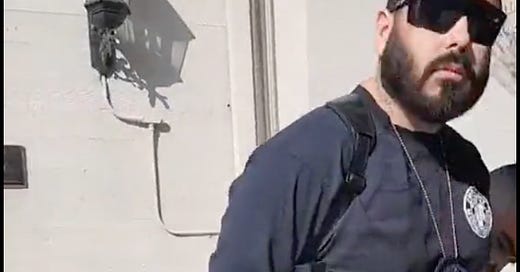



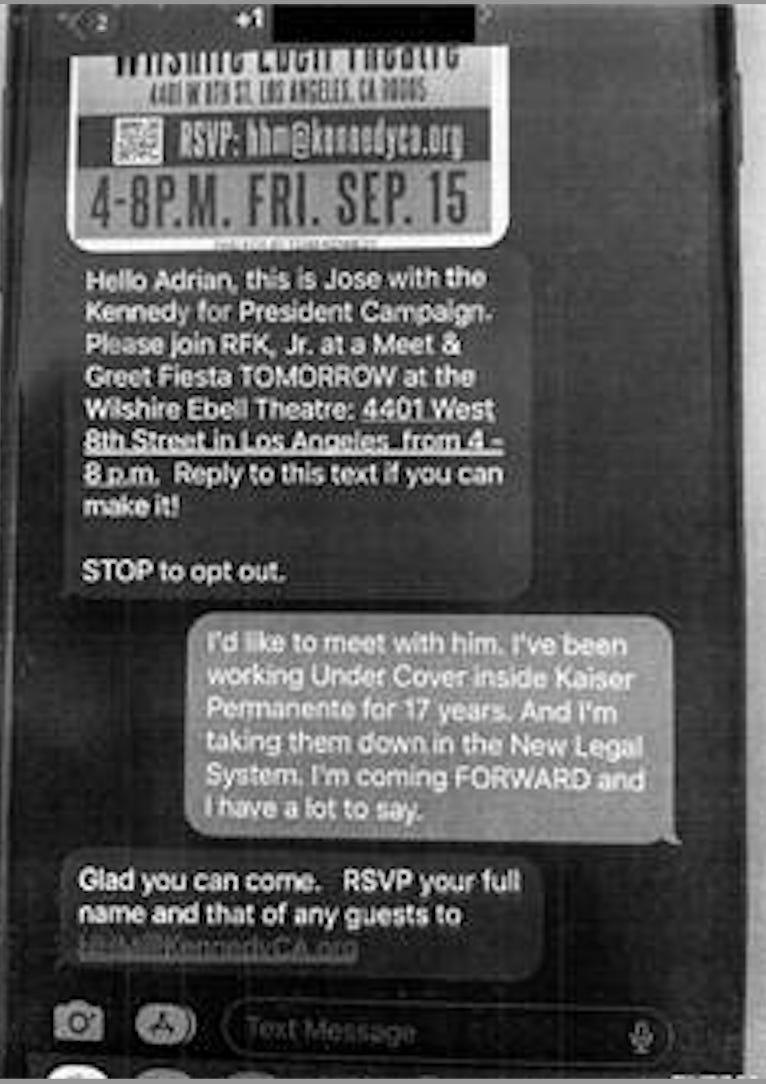
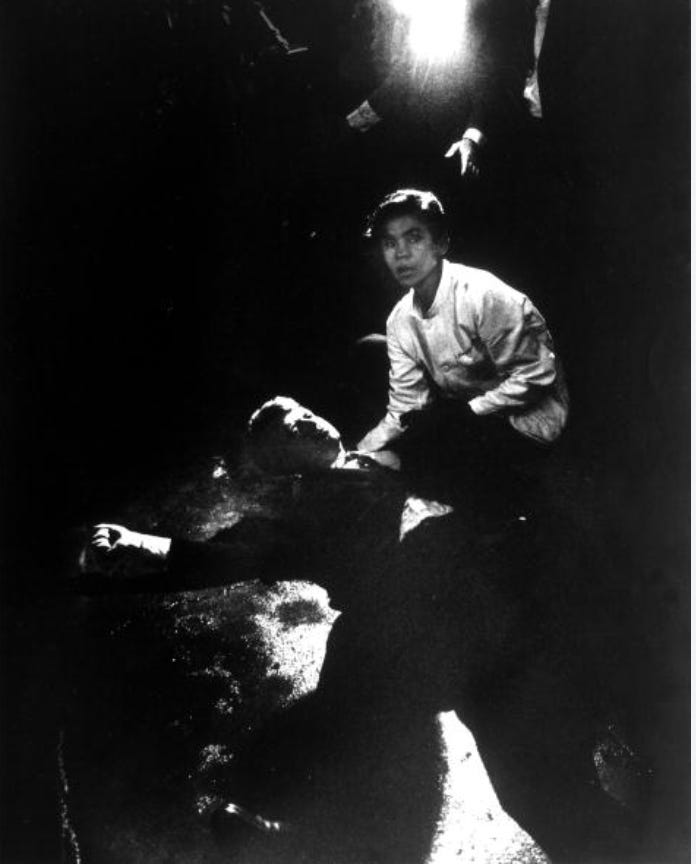

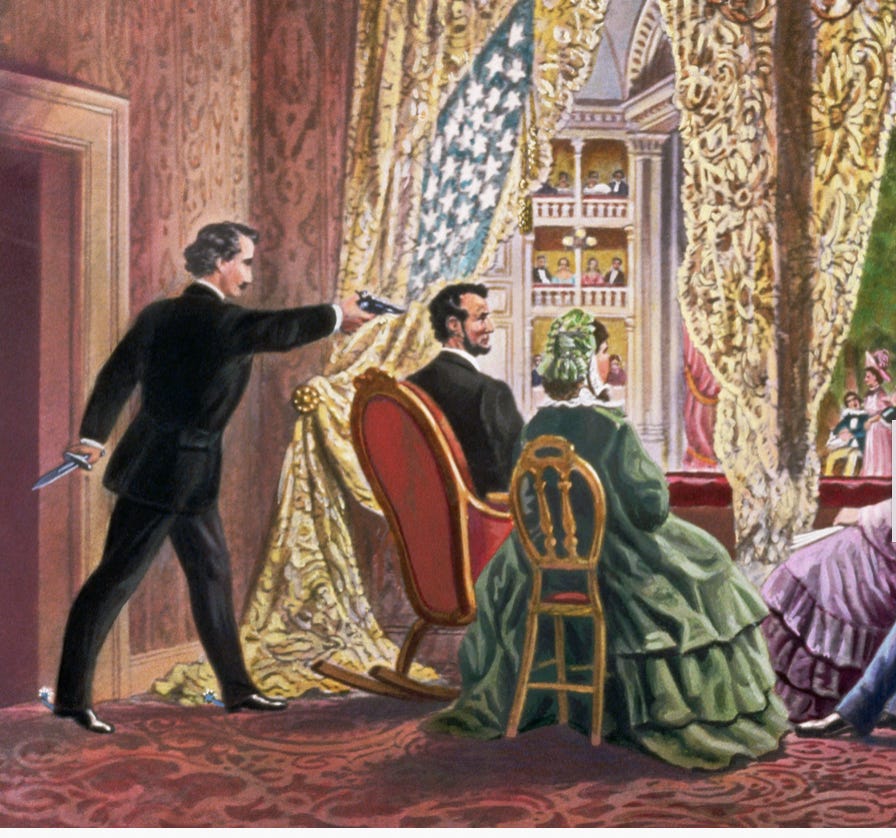

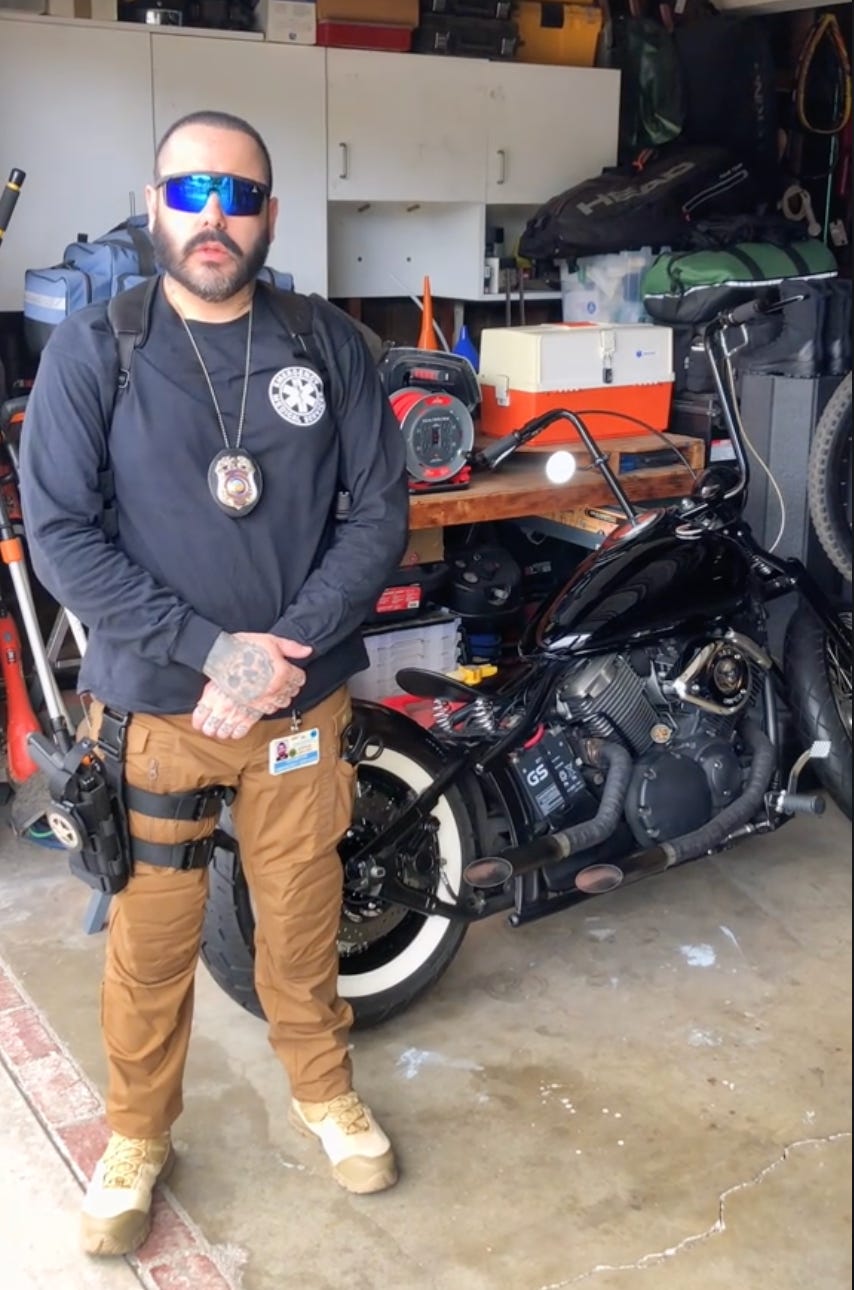
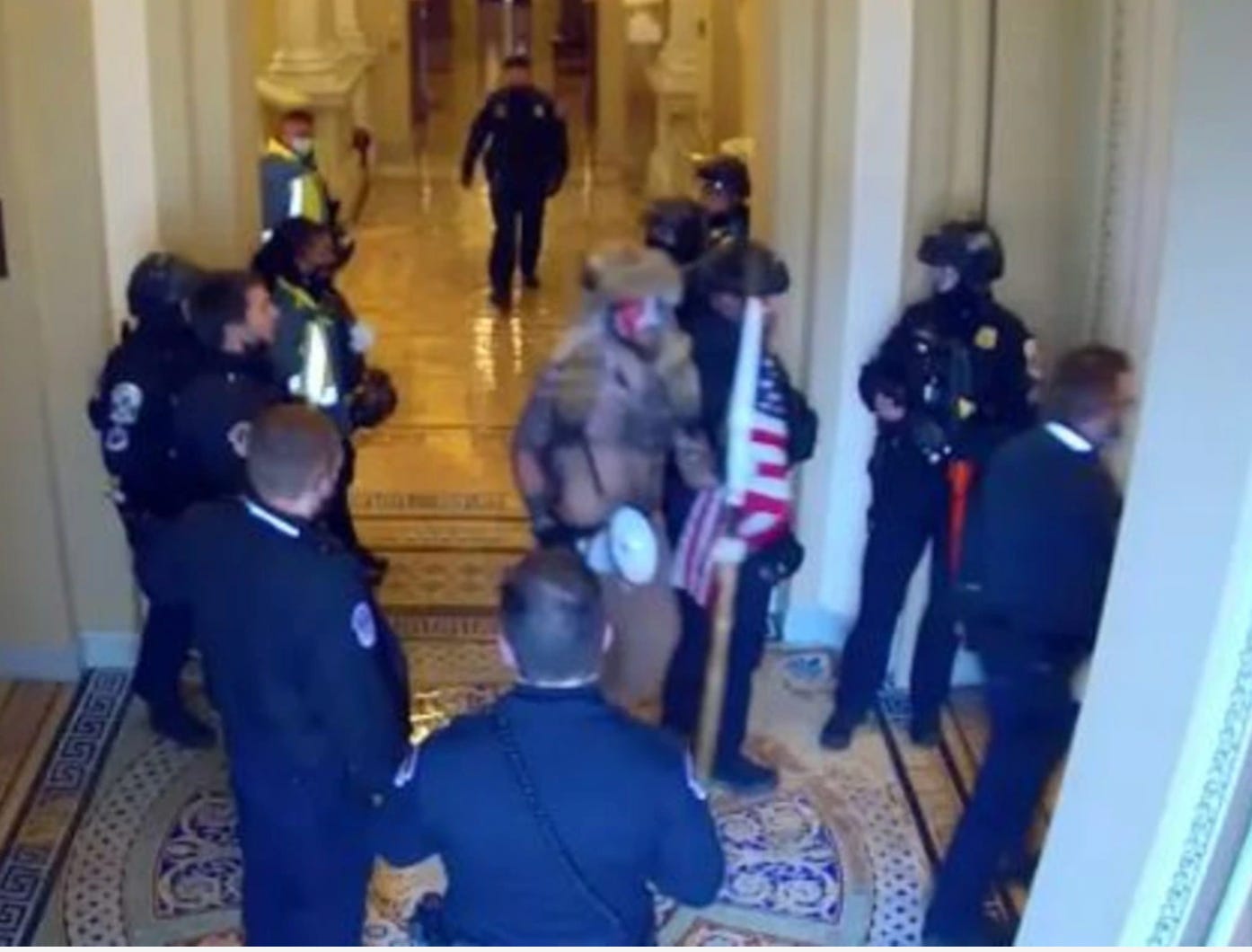
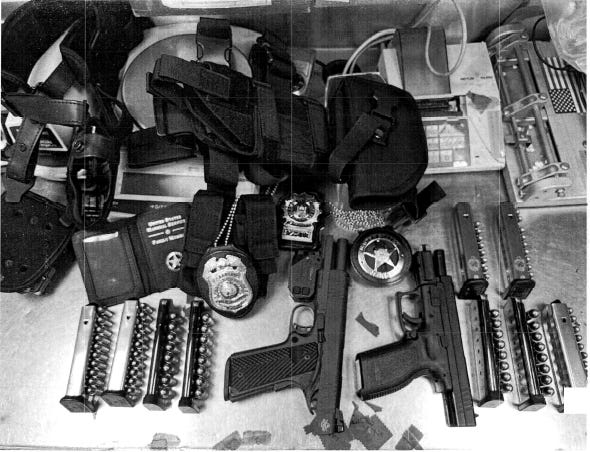
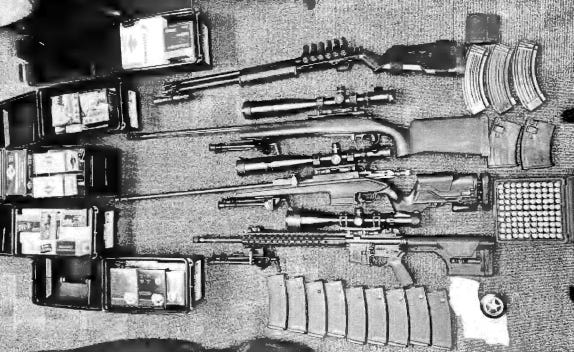
At least one person involved has a conscience. Thank you detective Douglas Beard.
Thank you for doing all this research that apparently no one else is willing to do. My own reading of the situation is that this man was more likely being groomed as a patsy.
As you suggest, creation of his odd video and the scrubbing of his Internet history would’ve required a much higher level of skill than he apparently possessed.
Just as the bullets fired by Sirhan at his father were not the fatal shots, they apparently hoped to get this fellow close enough to implicate him while someone else made the killshot.